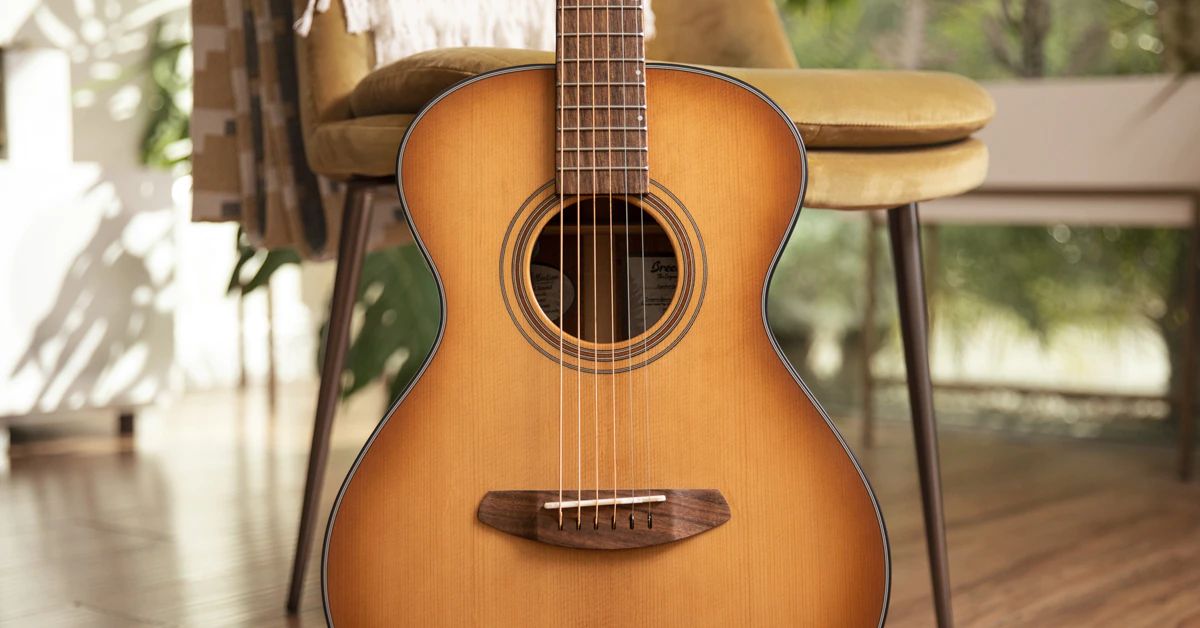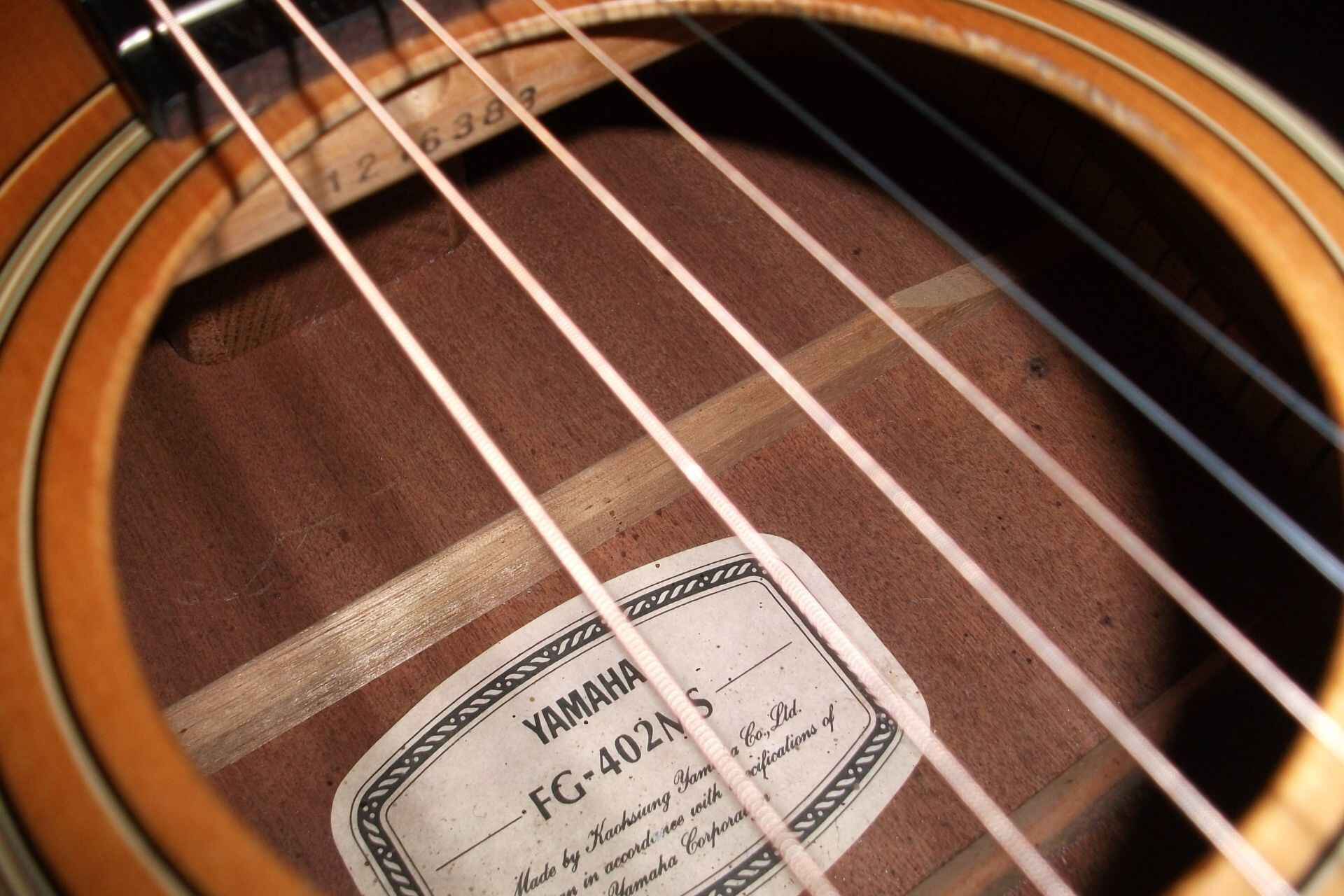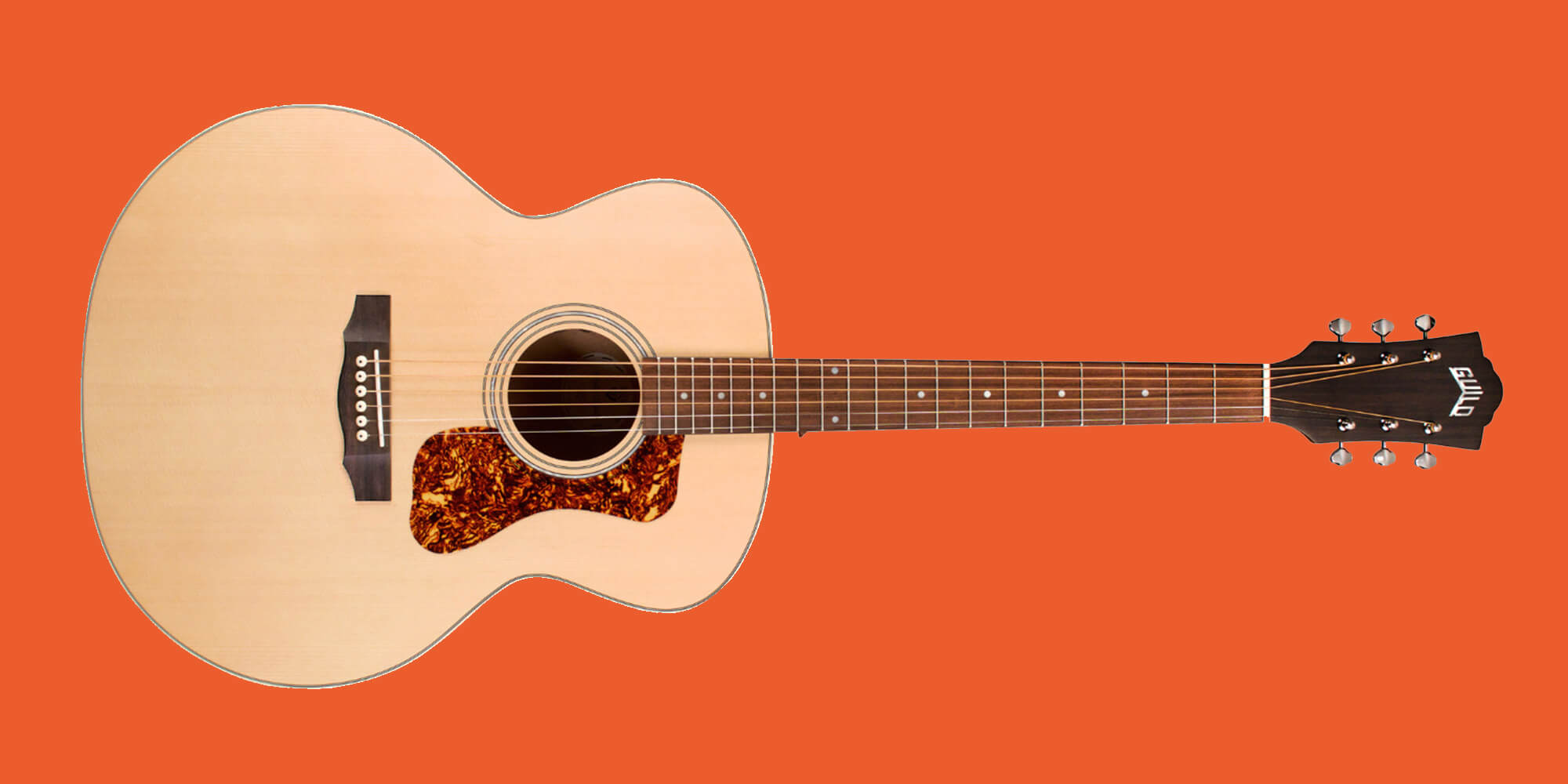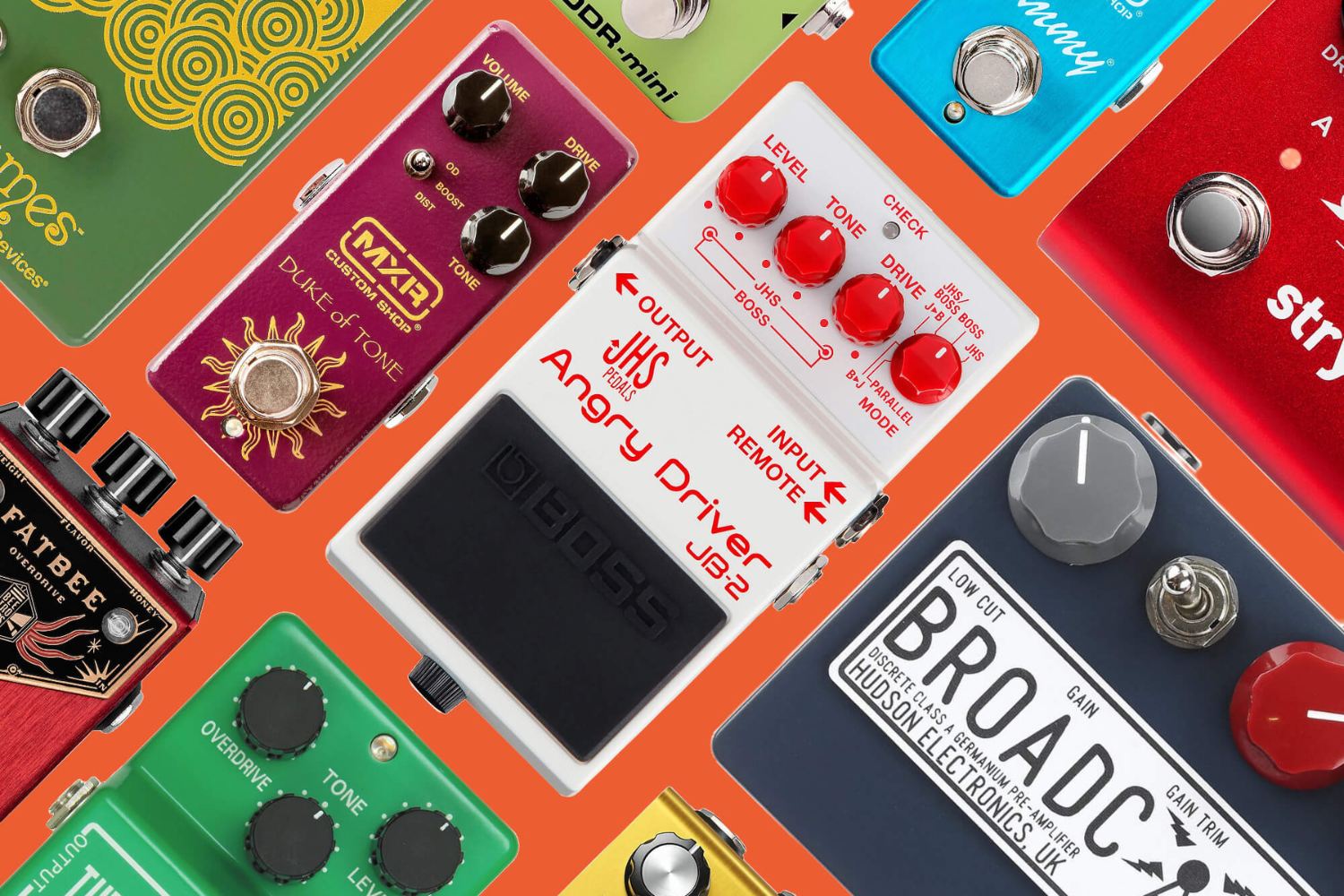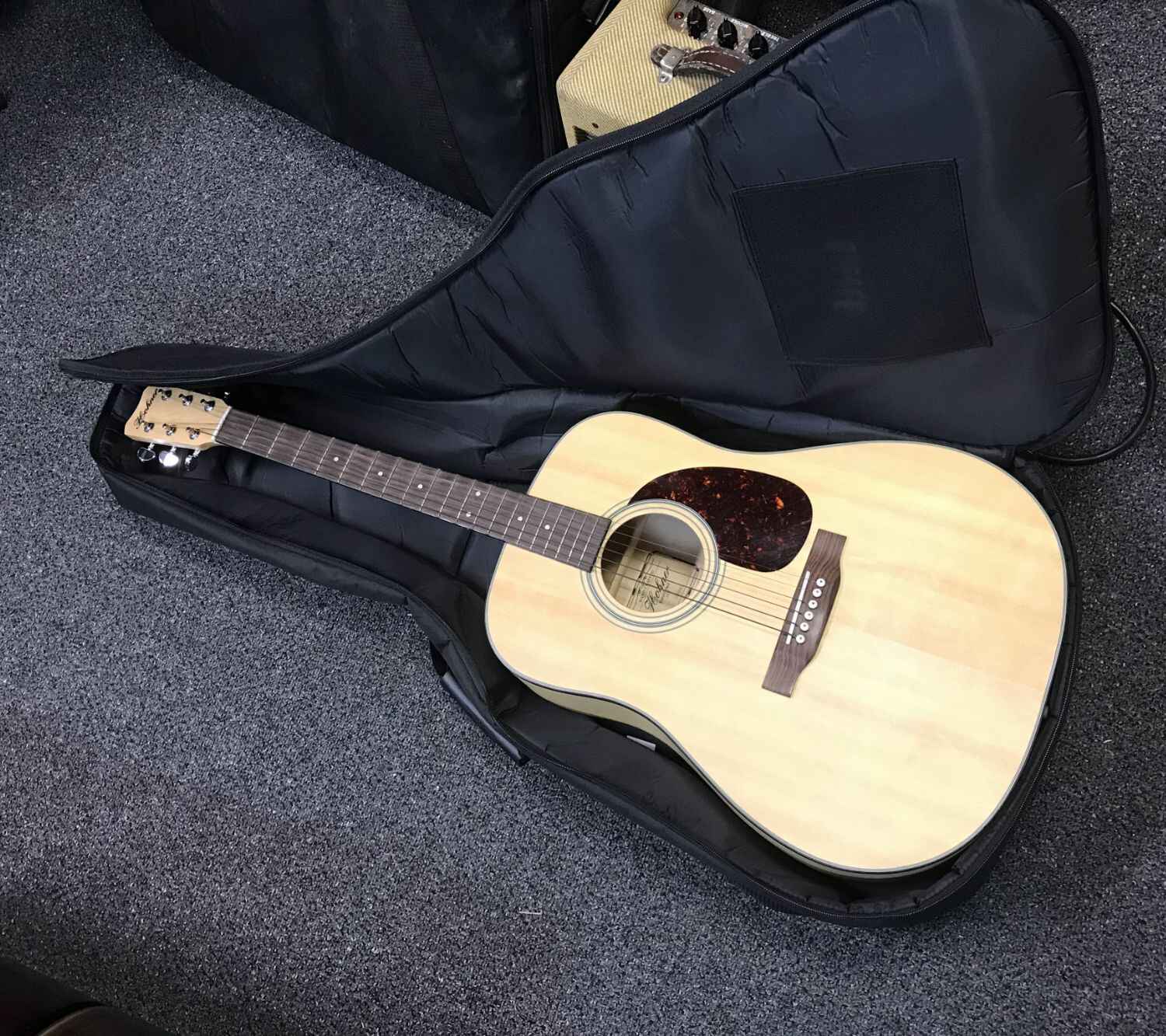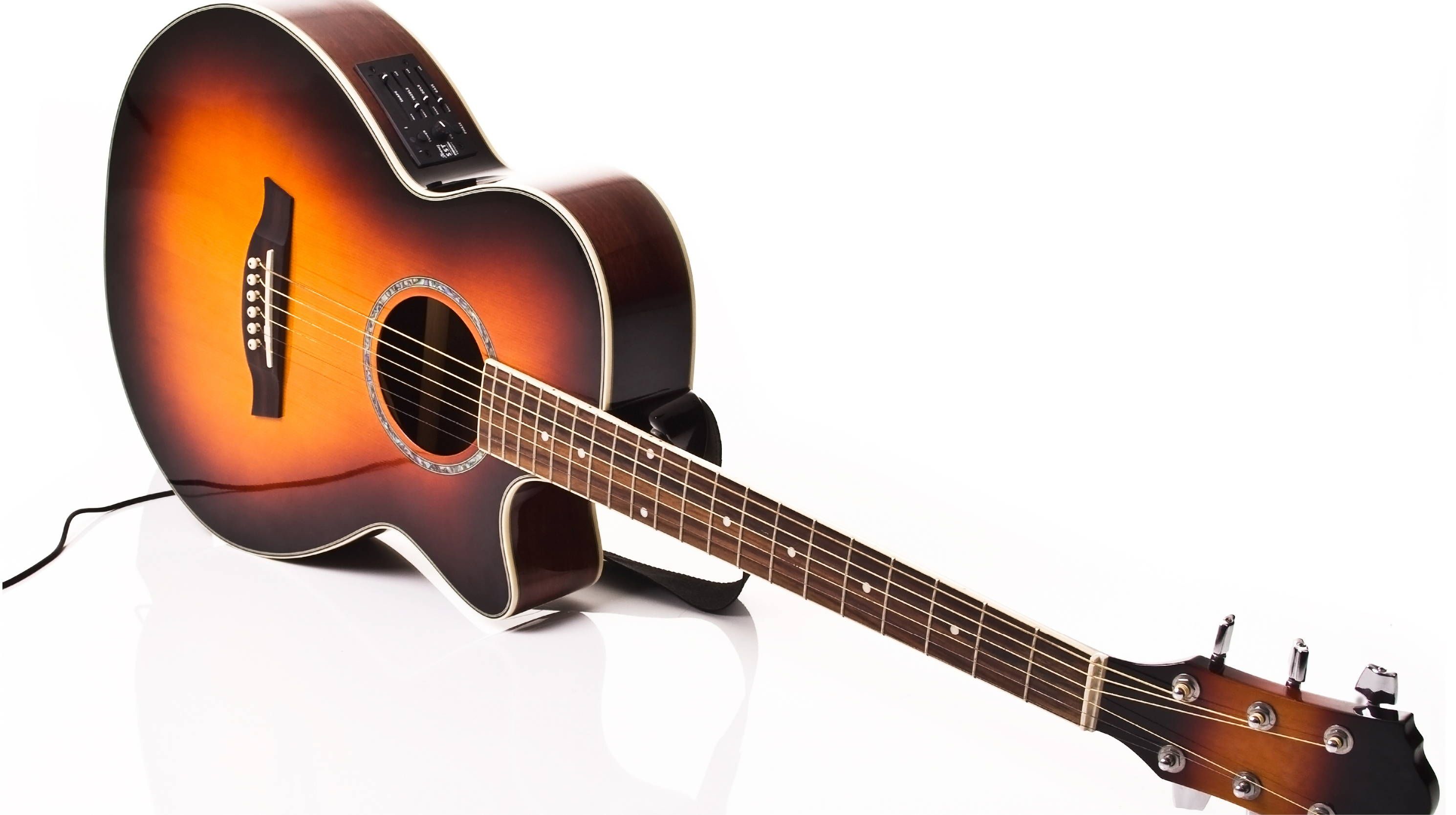History of the Acoustic Guitar
The acoustic guitar is a popular musical instrument that has a rich history spanning centuries. It is believed to have its roots in ancient civilizations, with stringed instruments similar to the guitar existing as early as 3,000 BCE. However, the modern acoustic guitar as we know it today has gone through several developments over the years.
The history of the acoustic guitar can be traced back to the Moorish era in Spain during the 8th century. The Moors introduced the “oud,” a stringed instrument, to the Iberian Peninsula. It was the predecessor to the guitar and had a rounded back and a relatively small body with five to six strings.
During the Renaissance period in Europe, the guitar gained popularity and underwent significant changes. It evolved into the “vihuela,” a larger instrument with six pairs of strings. The vihuela was widely played in Spain and other European countries and set the stage for the development of the modern-day acoustic guitar.
In the 19th century, Spanish luthiers made crucial advancements in guitar design. Antonio de Torres, considered the father of the modern classical guitar, introduced structural innovations that improved the guitar’s tonal quality and projection. His designs served as the foundation for acoustic guitars we use today.
It was in the early 20th century that the acoustic guitar began to capture widespread attention. The birth of blues and folk music genres led to a surge in popularity for the instrument. Artists like Robert Johnson, Lead Belly, and Woody Guthrie showcased the expressive potential of the acoustic guitar, making it an instrument of choice for musicians worldwide.
The iconic dreadnought guitar design, characterized by its large body and booming sound, originated in the early 20th century. C.F. Martin & Company played a significant role in popularizing this design, which became a staple in the acoustic guitar world and continues to be revered by musicians to this day.
The acoustic guitar’s popularity continued to soar in the mid-20th century with the emergence of rock and roll. Legendary musicians such as Bob Dylan, Johnny Cash, and The Beatles showcased the versatility of the acoustic guitar, cementing its position as a staple in various genres of music.
Today, the acoustic guitar remains a beloved instrument with a profound influence on music and culture. It has branched out into various styles, including classical, folk, country, and contemporary genres, and continues to captivate audiences worldwide with its timeless sound.
Anatomy of an Acoustic Guitar
An acoustic guitar is composed of various components that work together to create its unique sound. Understanding the anatomy of an acoustic guitar can help you appreciate the instrument and make informed choices when selecting or playing it.
The main parts of an acoustic guitar are the body, neck, and headstock. The body consists of a soundboard (top), back, and sides. The soundboard is typically made of spruce, which helps produce the guitar’s resonance and projection. The back and sides are commonly made of mahogany or rosewood, which contribute to the guitar’s tonal qualities.
The neck of an acoustic guitar is usually made of mahogany or maple and is attached to the body at the guitar’s heel. It is where the fretboard is located, which is typically made of rosewood or ebony. The fretboard features frets, which are metal wires embedded into the wood. Pressing down on the frets changes the pitch of the strings when they are strummed or plucked.
The headstock is located on the top end of the neck and houses the tuning pegs or machine heads. These pegs are used to adjust the tension of the strings, allowing players to tune the guitar to the desired pitch. The strings are attached to the bridge, which is located on the body of the guitar. The bridge transmits the vibrations from the strings to the soundboard, contributing to the guitar’s acoustic properties.
The soundhole, typically located in the center of the soundboard, is a crucial feature that allows air inside the guitar’s body to vibrate, enhancing the resonance and volume of the instrument. Some guitars also feature a pickguard, which protects the guitar’s finish from scratches caused by the player’s pick.
Additionally, acoustic guitars often have a truss rod, which is a metal rod embedded in the neck. The truss rod helps counteract the tension exerted by the strings, promoting neck stability and preventing issues like a warped neck.
The anatomy of an acoustic guitar is not limited to its physical components but also includes the types of strings and the various accessories used with the instrument. Different types of strings, such as steel or nylon, offer distinct tonal characteristics. Accessories like guitar straps, picks, and capos can also enhance the playing experience and versatility of the acoustic guitar.
Understanding the anatomy of an acoustic guitar allows players to appreciate the craftsmanship and functionality of the instrument. Each component plays a crucial role in producing the guitar’s unique sound and can impact the overall playing experience.
Different Types of Acoustic Guitars
Acoustic guitars come in various types, each with its distinct characteristics and sound. Understanding the different types can help you choose the right guitar that suits your playing style and musical preferences.
1. Classical Guitar: Also known as a nylon-string guitar, the classical guitar features a wide neck and a softer, mellow tone. It is ideal for classical, flamenco, and fingerstyle playing. The strings on a classical guitar are usually made of nylon or other synthetic materials, providing a smooth feel and warm sound.
2. Steel-String Acoustic Guitar: This type of acoustic guitar is commonly used in folk, country, and popular music genres. It has a narrower neck and steel strings, giving it a brighter and more robust sound compared to classical guitars. Steel-string acoustic guitars are versatile and suitable for strumming, fingerpicking, and even lead guitar playing.
3. 12-String Guitar: The 12-string guitar is similar in appearance to the standard six-string acoustic guitar, but it has an additional set of strings in pairs. These paired strings create a rich, chorus-like sound that provides enhanced harmonics and a fuller tone. 12-string guitars are commonly used for adding depth and resonance to strumming patterns.
4. Resonator Guitar: Resonator guitars have a unique design with a metal resonator cone instead of a soundboard. This cone amplifies the sound produced by the strings, resulting in a loud and distinct tone. Resonator guitars are commonly associated with blues, bluegrass, and slide guitar playing.
5. Parlor Guitar: Parlor guitars are smaller in size and have a vintage charm. They have a warm, intimate sound and are often favored by fingerstyle players and those looking for a more comfortable guitar to hold and play. Parlor guitars are great for folk, blues, and acoustic performances.
6. Jumbo Guitar: Jumbo guitars are known for their large and rounded bodies, which contribute to a powerful and booming sound. They produce a deep bass response and are often preferred by singer-songwriters or those looking for a strong projection in live performances.
7. Travel Guitar: As the name suggests, travel guitars are compact and designed for portability. They are excellent options for musicians on the go or those with limited storage space. Despite their smaller size, travel guitars can produce a surprising amount of volume and maintain decent tone quality.
These are just a few examples of the different types of acoustic guitars available. Each type has its unique sound, playability, and purpose. When choosing an acoustic guitar, consider your playing style, genre preferences, and the sound you want to achieve to find the perfect fit.
How Does an Acoustic Guitar Work?
Understanding how an acoustic guitar works can deepen your appreciation for the instrument and help you become a better player. An acoustic guitar produces sound through a combination of design elements and specific playing techniques.
At its core, an acoustic guitar is a resonant instrument. When a player plucks or strums the strings, they vibrate, creating sound waves. The vibrations travel through the bridge to the soundboard, which acts as a resonating chamber. The soundboard amplifies and projects the sound waves outward, creating the guitar’s acoustic tone.
The strings on an acoustic guitar are under tension and are typically made of steel or nylon. When a string is plucked or strummed, it oscillates back and forth, creating vibrations. The vibrating strings transfer this energy to the bridge, which then transmits the vibrations to the soundboard and the air inside the guitar’s body.
The shape and construction of an acoustic guitar also play a crucial role in producing its sound. The soundboard, usually made of spruce, is designed to be flexible and resonant. When the strings vibrate, the soundboard reverberates, effectively amplifying the sound. The back and sides of the guitar also contribute to the resonance and projection of the instrument.
The size and shape of the guitar’s body impact its tone. Larger-bodied guitars like dreadnoughts or jumbos tend to produce more volume and bass response, while smaller-bodied guitars like parlor guitars offer a more intimate sound. Each voicing and style of the guitar has its unique characteristics and tonal qualities.
Aside from the design elements, the player’s technique also influences the sound of an acoustic guitar. The way the strings are plucked or strummed, the force applied, and the position of the player’s fingers on the fretboard all contribute to the overall sound and tone. The player can control dynamics, articulation, and expressiveness through techniques like fingerpicking, strumming patterns, and slides.
Additionally, the choice of strings and accessories – such as picks or capos – can impact the sound and playability of the acoustic guitar. Different types of strings produce varying tonal characteristics, while accessories can offer versatility and enhance specific playing techniques.
Overall, the acoustic guitar’s sound is a result of the vibrations produced by the strings, the resonating properties of the body and soundboard, and the player’s technique. This combination of factors creates the rich, vibrant, and expressive tones that make the acoustic guitar such a beloved instrument.
Sound Production in Acoustic Guitars
The sound production in acoustic guitars is a fascinating process that involves a combination of physics, materials, and design elements. Understanding how sound is produced can help guitar players appreciate and optimize the instrument’s tonal qualities.
When a string on an acoustic guitar is plucked or strummed, it starts to vibrate back and forth. This vibration creates sound waves, which are essentially fluctuations in air pressure. The frequency of the vibration determines the pitch of the sound produced. Higher frequencies create higher-pitched notes, while lower frequencies produce lower-pitched notes.
The sound waves produced by the vibrating strings are transmitted through the bridge, which is connected to the guitar’s soundboard or top. The soundboard, typically made of spruce, is designed to be resonant and flexible. As the vibrating strings transfer energy to the bridge, the soundboard begins to vibrate as well.
The vibrations of the soundboard amplify and enhance the sound waves, effectively projecting the sound outward from the soundhole and the top of the guitar. The resonance of the soundboard contributes to the overall tone and volume of the acoustic guitar.
The shape and construction of the guitar’s body also play a significant role in sound production. The size and depth of the body affect the guitar’s resonance and tonal characteristics. Larger-bodied guitars tend to produce more bass response and volume, while smaller-bodied guitars offer a more focused and intimate sound.
The materials used in the construction of an acoustic guitar also contribute to its sound production. Different woods, such as mahogany, rosewood, or maple, have distinct tonal properties. The choice of wood for the back, sides, and neck can impact the guitar’s warmth, brightness, sustain, and overall tonal balance.
Another crucial aspect of sound production in acoustic guitars is the bracing system. Bracing refers to the internal reinforcement of the guitar’s top. Braces, typically made of spruce or other hardwoods, are strategically placed underneath the soundboard to provide support, stability, and tonal shaping. The bracing pattern and placement can affect the guitar’s responsiveness, resonance, and tonal characteristics.
Furthermore, the soundhole in the body of an acoustic guitar plays a crucial role in sound production. It allows air to move in and out of the guitar, allowing for the sound waves to resonate and amplify. The size and placement of the soundhole impact the overall balance, projection, and tonal qualities of the instrument.
It’s important to note that the player’s technique and style also affect sound production. The way a guitarist plucks, strums, or fingerpicks the strings, as well as their positioning on the fretboard, can affect the dynamics, articulation, and expressiveness of the sound produced.
In summary, sound production in acoustic guitars involves a combination of vibrating strings, resonating soundboards, body shape, wood choice, bracing, and player technique. All these elements work together to create the rich, vibrant, and unique tones that make acoustic guitars a beloved instrument for musicians around the world.
Features and Components of an Acoustic Guitar
An acoustic guitar is made up of several features and components that contribute to its functionality, playability, and overall sound. Understanding these elements can help players make informed decisions when selecting or customizing their instrument.
1. Body: The body of an acoustic guitar is typically made of wood and is responsible for shaping the instrument’s sound. It can come in various shapes and sizes, such as dreadnought, jumbo, or parlor, each offering unique tonal characteristics and volume levels.
2. Soundboard: The soundboard, also known as the top, is the front face of the guitar body. It is usually made of spruce and is responsible for transmitting the vibrations from the strings and resonating the sound.
3. Back and Sides: The back and sides of the guitar are also made of wood and contribute to the instrument’s tonal qualities. Mahogany, rosewood, and maple are commonly used woods for the back and sides, each offering its distinct sound characteristics.
4. Neck: The neck is attached to the body and is typically made of mahogany or maple. The neck holds the fretboard and provides support for the strings. It also influences the guitar’s playability and stability.
5. Fretboard: The fretboard is usually made of rosewood or ebony and is located on the neck. It contains metal frets that divide the neck into different pitches, allowing players to create various notes and chords.
6. Headstock: The headstock is located at the end of the neck and holds the tuning pegs. These pegs are used to adjust the tension of the strings and tune the guitar to the desired pitch.
7. Bridge: The bridge is located on the body of the guitar and is where the strings are anchored. It transmits the vibrations from the strings to the soundboard, contributing to the overall resonance and tone of the instrument.
8. Nut: The nut is a small piece located at the top of the fretboard. It has grooves that hold the strings and maintain their position and spacing. The nut also helps define the string height and contributes to the guitar’s playability.
9. Bracing: Bracing refers to the internal pattern of wooden supports placed underneath the soundboard. The bracing system provides structural stability and affects the guitar’s tone and responsiveness.
10. Strings: The strings are essential components of an acoustic guitar. They can be made of either steel or nylon, and different string gauges and materials produce distinct tonal characteristics and playability.
11. Accessories: Accessories such as guitar straps, picks, capos, and amplification devices are supplementary components that enhance the playing experience and versatility of the acoustic guitar.
Understanding the features and components of an acoustic guitar allows players to make informed choices based on their preferences and playing styles. Each element contributes to the instrument’s overall sound, playability, and aesthetic appeal, making the guitar a versatile and captivating musical companion.
Common Playing Techniques for Acoustic Guitars
Acoustic guitars offer a wide range of playing techniques that allow musicians to express their creativity and explore different musical styles. Whether you’re a beginner or an experienced player, mastering these techniques can significantly enhance your acoustic guitar skills and musicality.
1. Strumming: Strumming is a fundamental technique where you use a pick or your fingers to brush across the strings in a rhythmic pattern. It is commonly used to accompany singing or to create a rhythmic foundation for songs.
2. Fingerpicking: Fingerpicking involves plucking the strings directly with your fingers. This technique allows you to play melodies, chord progressions, and intricate patterns simultaneously. Fingerpicking is commonly used in folk, classical, and blues music.
3. Flatpicking: Flatpicking involves using a flatpick to strike the strings in an upward or downward motion. This technique creates a clear and precise sound and is commonly used in country, bluegrass, and rock music.
4. Hammer-Ons and Pull-Offs: Hammer-ons and pull-offs are techniques used to create smooth and flowing transitions between notes without re-plucking the string. A hammer-on is when you use a finger to press a higher-pitched note on the fretboard without plucking the string, while a pull-off is when you lift a finger off a note to produce a lower-pitched note.
5. Slides: Slides involve smoothly transitioning from one pitch to another by sliding your finger up or down the fretboard. Slides can add expressiveness and create unique musical effects in your playing.
6. Bending: Bending involves pushing or pulling the string sideways while plucking or fretting it to raise or lower the pitch gradually. This technique is often used in blues, rock, and country music to create expressive and emotive notes.
7. Vibrato: Vibrato is a technique used to add a controlled variation in pitch to a sustained note. By rapidly moving your finger back and forth on the string, you can create a subtle or exaggerated vibrato effect, adding depth and expression to your playing.
8. Percussive Techniques: Acoustic guitars offer various percussive techniques such as tapping, slapping, and using the body of the guitar as a drum. These techniques can add rhythmic interest and texture to your playing.
9. Open Tunings: Experimenting with different tunings such as open tunings can provide new sonic possibilities. Open tunings involve adjusting the strings so that when strummed, they produce a chord without requiring any fingering.
10. Hybrid Techniques: Musicians often combine multiple techniques to create their own unique playing style. Experimenting with combinations of techniques, fingerpicking patterns, and chord progressions can unlock endless creative possibilities.
Mastering these common playing techniques for acoustic guitars takes time and practice. By incorporating these techniques into your playing, you can add depth, creativity, and versatility to your acoustic guitar repertoire.
Choosing the Right Acoustic Guitar for You
Choosing the right acoustic guitar is a crucial decision that can greatly impact your playing experience and musical journey. With a wide variety of options available, it’s important to consider several factors to ensure that you find the perfect match for your needs and preferences.
1. Playing Style: Consider the style of music you want to play. Different guitar styles, such as folk, blues, or classical, may require specific acoustic guitar types and tonal characteristics.
2. Body Shape and Size: Acoustic guitars come in various body shapes and sizes, including dreadnought, concert, and parlor. Each shape has its own tonal qualities, volume levels, and playability. Try out different body sizes to find one that feels comfortable and suits your aesthetic preferences.
3. Tonewoods: The type of wood used in the construction of the guitar affects its tone. Common tonewoods include spruce, mahogany, and rosewood. Each wood offers unique tonal properties, so consider the sound characteristics you prefer when choosing a guitar.
4. Budget: Set a budget for your acoustic guitar purchase. Determine how much you are willing to spend and explore guitars within that price range. Remember that higher-priced guitars tend to offer better build quality, sound, and playability.
5. Playability: Consider how comfortable the guitar feels in your hands. Pay attention to the neck width and shape, as well as the action (string height). A well-constructed guitar with smooth frets and a comfortable playing experience can greatly enhance your enjoyment and progress as a player.
6. Brand and Reputation: Research and consider reputable guitar brands known for their quality craftsmanship and reliable instruments. Look for brands with positive reviews and a history of producing excellent acoustic guitars.
7. Testing and Trying: Take the time to play various guitars before making a decision. Visit a music store or try out guitars at local dealers. Play different models, styles, and brands to get a sense of their unique characteristics and find the one that resonates with you.
8. Seek Expert Advice: If you’re unsure or overwhelmed, consult with experienced guitar players or knowledgeable staff at music stores. They can provide valuable insights and recommendations based on your skill level, musical goals, and budget.
9. Longevity: Consider whether you are looking for a guitar that will accompany you for a long time or if you are comfortable with upgrading in the future. Investing in a high-quality, durable guitar can ensure that it remains a cherished instrument for years to come.
10. Personal Connection: Lastly, trust your instincts and choose a guitar that speaks to you on a personal level. The connection you feel with the instrument is essential in inspiring and motivating your musical journey.
Choosing the right acoustic guitar requires careful consideration of factors like playing style, body shape, tonewoods, budget, and playability. By finding the perfect fit, you can embark on your musical endeavors with an instrument that will serve as a loyal companion for years to come.
Caring for Your Acoustic Guitar
Taking proper care of your acoustic guitar is essential to ensure its longevity, playability, and sound quality. By following a few simple maintenance practices, you can keep your instrument in excellent condition for years to come.
1. Cleaning: Regularly clean your guitar to remove dirt, sweat, and oils that can accumulate on the body, fretboard, and strings. Use a soft, lint-free cloth to gently wipe down the guitar after each playing session.
2. Humidity Control: Acoustic guitars are sensitive to changes in humidity, which can cause the wood to warp, crack, or swell. Use a humidifier or dehumidifier to maintain a stable humidity level (around 45-55%) in the room where you store your guitar.
3. Storage: When not in use, store your acoustic guitar in a proper case or stand. Ensure that the guitar is secure and protected from potential accidents or damage.
4. String Care: Replace your guitar strings regularly to maintain good tone and playability. Wipe down the strings after each use to remove built-up residue and extend their lifespan. Consider using string cleaners or lubricants to minimize string squeaks and improve overall performance.
5. Fretboard Maintenance: Keep the fretboard clean and conditioned. Use a specialized fretboard cleaner and conditioner to remove dirt and grime and prevent the wood from drying out. Apply lemon oil or other suitable products sparingly and follow the manufacturer”s instructions.
6. Tuning: Tune your guitar regularly to ensure proper pitch and tension on the strings. Use an electronic tuner or smartphone app for accurate tuning. Avoid using excessive force when tuning to prevent strain on the neck or damage to the guitar’s components.
7. Avoid Extreme Temperatures: Protect your guitar from extreme temperature fluctuations. Avoid leaving your guitar in direct sunlight, near radiators or heaters, or in a vehicle on a hot day.
8. Strap Buttons and Strap Locks: If you use a guitar strap, consider installing strap buttons or strap locks to secure the strap firmly and prevent accidental drops or falls.
9. Regular Checkups: Take your acoustic guitar to a professional luthier or guitar technician for regular checkups and maintenance. They can inspect and adjust the neck relief, action, and overall setup to ensure optimal playability.
10. Play with Clean Hands: Wash your hands before playing the guitar to minimize the transfer of dirt, oils, and sweat onto the instrument. This can help reduce the buildup of grime on the strings and the body.
By following these care tips, you can keep your acoustic guitar in top condition, maintaining its aesthetic appeal, playability, and sound quality. Remember, a well-maintained guitar not only sounds better but also becomes a cherished musical companion for years of enjoyment.
Frequently Asked Questions about Acoustic Guitars
Here are some commonly asked questions about acoustic guitars:
1. What is the difference between an acoustic guitar and an electric guitar?
An acoustic guitar relies on the natural amplification of its hollow body to produce sound. It does not require an external amplifier. In contrast, an electric guitar requires an amplifier to produce sound and often has a solid body.
2. Should I choose steel-string or nylon-string for my acoustic guitar?
It depends on your playing style and the sound you prefer. Steel-string guitars are versatile and suitable for various genres, while nylon-string guitars (also known as classical guitars) have a softer, mellow tone that is great for fingerstyle playing and classical music.
3. How often should I change the strings on my acoustic guitar?
It is recommended to change your strings every few months or when they start to sound dull or show signs of wear. Regular playing, as well as factors like humidity and sweat, can affect the lifespan of the strings.
4. How can I prevent my acoustic guitar from drying out?
Use a humidifier to maintain a stable humidity level, especially during dry seasons. Keep your guitar in its case when not in use and store it away from areas with drafts or extreme temperature fluctuations.
5. Can I perform guitar maintenance and adjustments myself?
While basic maintenance like cleaning and string changing can be done at home, more complex adjustments and repairs are best left to professional luthiers or guitar technicians. They have the knowledge and tools to ensure proper setup and maintenance of your guitar.
6. How can I improve my guitar playing skills?
Consistent practice, taking lessons, and learning from tutorials or online resources can help you improve your guitar playing skills. Experiment with different playing styles, techniques, and genres to broaden your musical horizons.
7. What is the best way to amplify my acoustic guitar for live performances?
There are several options for amplifying an acoustic guitar, including using a dedicated acoustic guitar amplifier, a combination amplifier, or an acoustic guitar pickup system. The choice depends on your needs, budget, and desired sound.
8. How can I avoid hand fatigue while playing the acoustic guitar?
Hand fatigue can be reduced by maintaining proper hand positioning, using proper guitar technique, taking breaks during extended playing sessions, and gradually building up your finger strength and stamina through regular practice.
9. Can I use a pick on a nylon-string acoustic guitar?
Yes, you can use a pick on a nylon-string guitar. However, be mindful of the string tension and the guitar’s sensitivity. Experiment with different picks to find one that produces the desired sound without damaging the strings or the guitar.
10. Are expensive guitars always better?
The price of a guitar does not necessarily indicate its quality or suitability for you. Factors like materials, craftsmanship, and brand reputation can contribute to the price. It’s important to play guitars within your budget and choose one that feels and sounds right for you.







